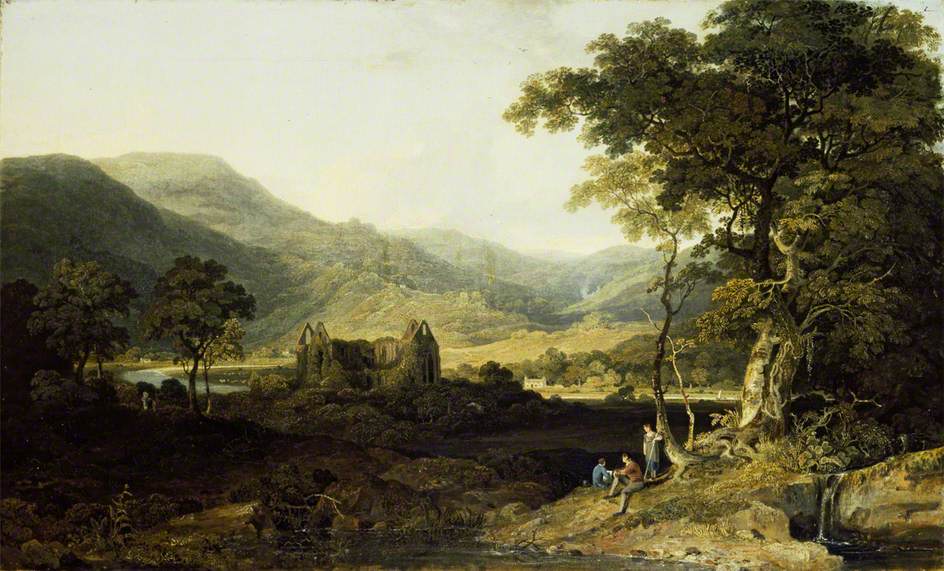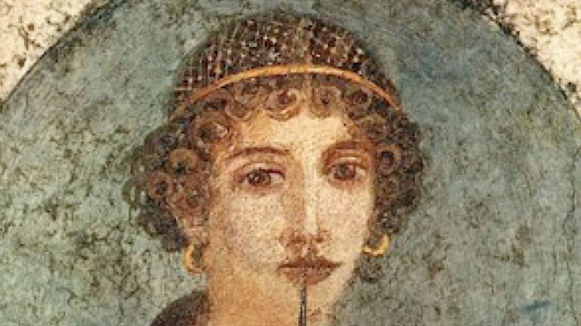Home » Topics / Subgenres » Reflection / Meditation (Page 2)
Category Archives: Reflection / Meditation
A Sand County Almanac
Aldo Leopold
1948
(An ecologist contemplates and celebrates the land, and recommends an expansion of our moral world.)

In today’s courses on ecology, forestry, conservation, environmental philosophy or land use, three personalities are routinely introduced as the fathers of modern concern for nature, the three who first and most strongly urged us to enlarge our conception of what in this world is a proper object of moral consideration: Henry David Thoreau, John Muir, and Aldo Leopold. Contemporary American (and to some extent world) culture has been impacted by A Sand County Almanac, as by Thoreau’s Walden, to such an extent that we cannot yet begin to assess it. Nevertheless, I would argue that we as a culture have still not attended to the two main lessons A Sand County Almanac would teach us.
Lyrical Ballads, and other early poems
William Wordsworth
1785-1799
(A poetic sage takes lessons on goodness and beauty from nature.)

A man of wisdom, a poet of nature, is Wordsworth. These are the goals to which he aspires, goals that are discernable in his work from a very early age. He wrote many of his greatest poems in the years covered here, before he reached 30. Wisdom, or more specifically a yearning for and contemplation of goodness and beauty, suffuses his poetry. Thus he is keen to deliver moral advice, and almost seems to teach or prophesy rather than reflect. But it is the deepest and most profitable kind of reflection, I can almost hear him replying, whose results teach the reflector something. And since he insists in the Preface to his Lyrical Ballads that he writes each poem with a purpose, and with the intent of delivering objective truths rather than ideas that one may take or leave as a matter of preference, we must prepare for a slight didactic or pedagogical flavor now and then. For Wordsworth, though firmly against elitism in poetry, is aware of his own wisdom, and is driven to share it with others. The topics range from attitudes towards people (as in “Matthew”), to attitudes towards nature (as in “Lines Written in Early Spring”), to a straightforward exhortation to be good (as in “Goody Blake and Harry Gill”). He imparts his values on social matters as well, regarding for instance the evil of slavery (at the end of “Descriptive Sketches”), the necessity of legislated charity (at the beginning of “The Old Cumberland Beggar”), and thoughts on education (e.g. “Expostulation and Reply”).
Sappho’s poetic fragments
Sappho
7th-6th centuries BC
(The tenth muse expresses beauty, love, and the contents of her heart.)

Αιαι. Aiai! If only our dinner hosts still upheld the custom of ordering beautiful recitations over the wine! So it was in the days when some, at least, still believed in the Muses. On one of these evenings, Solon the Athenian stopped his nephew Execestides, who had just sung a song. “Teach it to me,” he said. Then he turned to an inquiring fellow guest. “I want to learn it and die.” (Aelian, in Stobaeus’ Anthology 29.58). The ancients spoke of only one poet in such tones: Sappho (Σαπφώ, spelled in her dialect Ψάπφω). Strabo called her the greatest poetess (Geography 13.617). Her people the Mytilenaeans engraved her on their coins (Pollux, Vocabulary 9.84). Plato called her the tenth muse (Palatine Anthology 9.506). We can surmise, then, how precious her works must have been to these many admirers through the centuries, these classical devotees of expression and imagery. Once, a volume of her poetry was taken from the town hall of Syracuse. “How sorely this stolen Sappho was missed,” moaned Cicero, “is almost more than words can tell” (Orations against Verres 2.4.57). Who would have thought that anything could even “almost” leave our eloquent Tully at a loss for words! But just imagine how his tongue would have failed him if not just one volume but her entire works had been stolen, and not just from a town library but from the whole world! For we are in this very state today, by some unhappy accident of history. All we have of her nine books of poetry are a couple hundred fragments, most of them mere words or phrases that scholars have gleaned painstakingly from quotations throughout Greek and Latin literature. A great irony lies in the epitaph Pinytus wrote for her, whose promise has sadly failed: “This tomb hath the bones and the dumb name of Sappho, but her wise utterances are immortal” (Palatine Anthology 7.16).
Pearl
The West Midlands Poet
14th century
(A father struggles to recover faith and peace after losing his baby daughter.)

Diversity of structure is one of the wonders of poetry. Today’s poets often celebrate freedom from structure, which has its own beauty. The medieval mind cherished a different kind of beauty, one that is neither extinct nor obsolete today, just overlooked. It is the elegant euphony of placing what one wishes to convey into a strict, unifying framework. Rather than delivering a point casually or even haphazardly as we may do in everyday life, the medieval poet would conform ideas to a predetermined scheme of alliteration, rhyme, stress, mid-line breaks (caesurae), and a multilevel organization of lines into stanzas and groups of stanzas, interconnected by strands of repetition. Surely it is a handicap to expression—but this is part of its charm! The skill required to create a meaningful poem that has a detailed or complicated structure is so great that its demands separate the geniuses from the dabblers. Modern poetic sensibilities may balk at this comment, but in this age where much art and poetry is still very polarized into distinct “high” and “low” forms, I think these sensibilities are a little hypocritical. It seems in fashion today both to create art that only a fraction of society can understand, and at the same time to repudiate notions of hierarchy, including hierarchy of understanding, wherever they appear. Generally the medieval mind, cultivated within the feudal economic and political system and a strongly hierarchical Church, was more candid about social stratification. Medievals did not tend to preach egalitarianism except under God, which would be realized only in another world. This perspective characterized their art as well as society. The structured medieval poem’s handicap to expression is in itself, aside from its resulting euphony or atmosphere, a badge of excellence.



Apology of Socrates
October 3, 2014 / Leave a comment
(Απολογια Σωκρατους)
Plato
4th century BC
(An innocent man delivers an inspiring speech to the court before he is executed.)
Socrates is a bit of a mystery, if you insist on being a real evidentiary hardliner. He wrote nothing himself, so we have to rely on others’ characterizations of him. Xenophon paints him as the conventional wise man of the day. Aristophanes deems his philosophizing empty and ridiculous. Plato’s conception, the fullest and most detailed, is of a man worthy of admiration, even awe, both for his intellect and his noble spirit. Plato’s Socrates seeks truth despite fashion or convention; he is imaginative, reverent, humble, perceptive, eloquent, and sharp as a razor. I’ll go with Plato, not just because his picture is most complimentary, but because Xenophon’s is simplistic (in fact it suggests that Xenophon—with all due respect—knew Socrates only casually, but wished to write as though he knew him well); and Aristophanes did nothing more than exploit a famous name, attaching it to a caricature for effect. In fact there were many philosophers in Athens who were very much like those “Sophists” Aristophanes pillories in his play The Clouds. Socrates was the most famous philosopher around at the time, and he certainly would have associated and debated with the general run of them. His was probably a household name, to be thrown about as representative of the lot of lounging jabberers even though– to one who actually listened to him– he towered above the rest.
(more…)